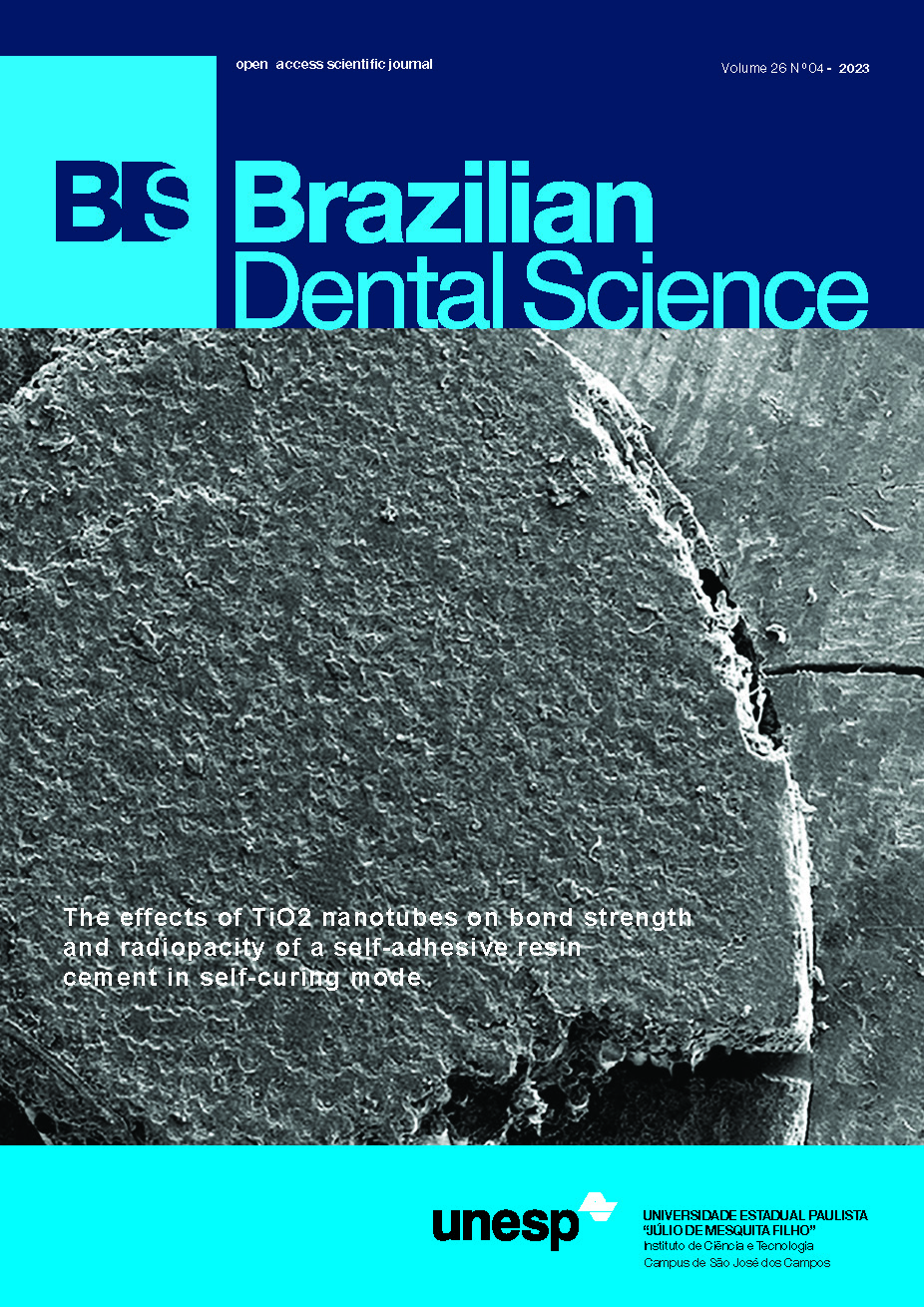Argon plasma application on the surface of titanium implants: osseointegration study
DOI:
https://doi.org/10.4322/bds.2023.e3843Abstract
Introduction: The development of new biomaterials with improved properties is a trend in regenerative medicine. The successful healing of implants is related to their osseointegration and the topographic geometry of their surface. Treatment with argon plasma acts on the surface of the implants, bringing several benefits to their osseointegration in the body. Material and Methods: Previously the in vivo study, the topography implants were observed by scanning electron microscopy (SEM). Following the implants were inserted in 14 male rats, and one perforation was made in the right and left tibias for implant placement without the surface treatment (control group), and with the argon plasma surface treatment (experimental group), respectively. The rats were euthanized at 4 weeks, a time in which tibia fragments were submitted for histological and histomorphometric examination, and torque removal test for comparison and analysis of osseointegration. Results: The SEM images showed the argon plasma surface treatment altered the topography. At the end of the study, both greater bone formation and better osseointegration were verified in the experimental group, and a statistically significant difference between the groups was observed. Conclusion: It was concluded that implants with this surface treatment can bring more practicality in the rehabilitation treatment, and more comfort in the patients’ postoperative time.
KEYWORDS
Argon plasm; Implant; Osseointegration; Reverse torque; Titanium.
Downloads
Published
How to Cite
Issue
Section
License
Brazilian Dental Science uses the Creative Commons (CC-BY 4.0) license, thus preserving the integrity of articles in an open access environment. The journal allows the author to retain publishing rights without restrictions.
=================




























